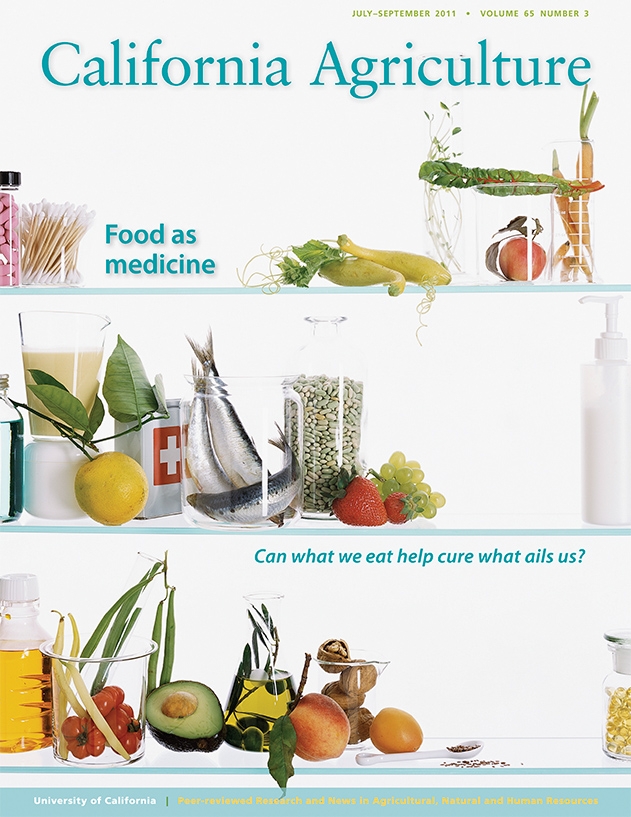UC Blogs
How to Tame Your Dragonfly
For at least three days, he visited our yard.He swooped over our fish pond and swimming pool and returned each time to perch on a tomato stake in the...
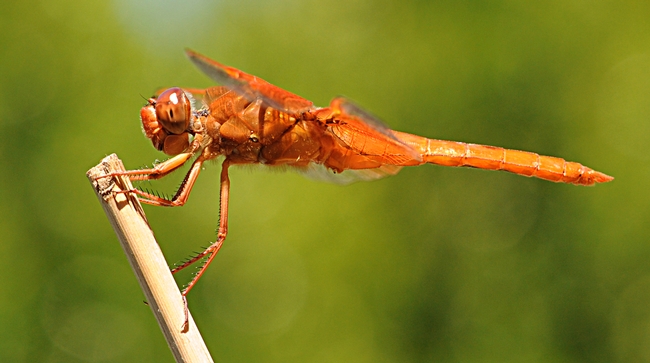
Flame skimmer perched on a bamboo stake. (Photo by Kathy Keatley Garvey)
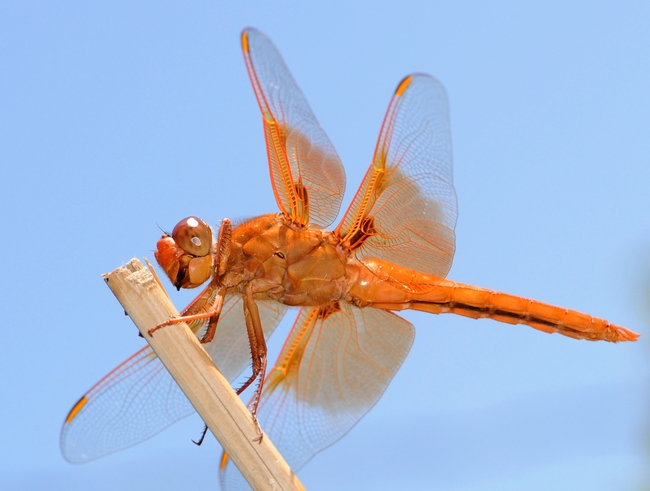
Flame skimmer outlined against the sky. (Photo by Kathy Keatley Garvey)
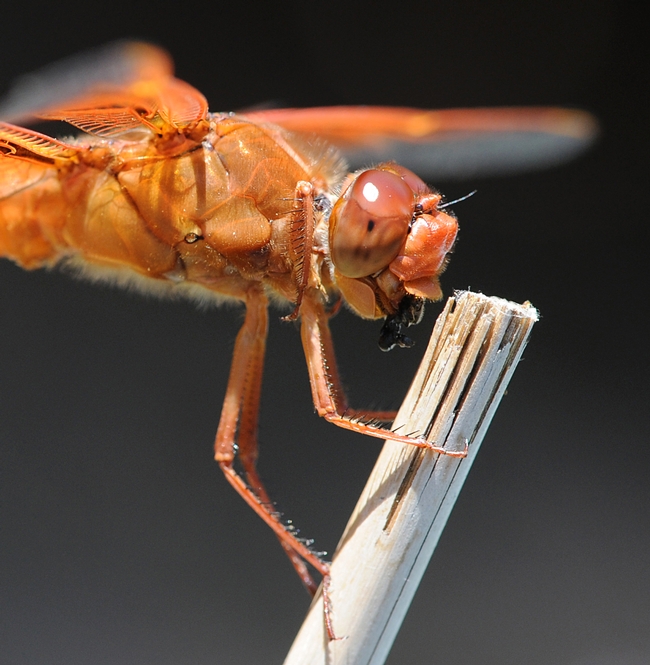
Close-up of flamer skimmer with native bee in his mouth. (Photo by Kathy Keatley Garvey)
Redding newspaper article features new Shasta CD
The Redding Record Searchlight ran a story last week introducing Shasta County residents to their new UC Cooperative Extension director, Larry Forero. Forero replaces Gary Nakamura, who retired in June after 27 years as a forestry specialist - the last four he also served as county director.
The story noted that Forero, 50, has been the UCCE livestock/natural resources advisor in Shasta County for 20 years and will continue in that role in addition to his county director duties. Forero grew up in Weaverville and earned a bachelor's degree in agriculture from Chico State University, a master's degree in range science from Colorado State University and a doctorate in wildland resource science from UC Berkeley.
Forero told reporter Laura Christman that he isn't planning big changes for the local Cooperative Extension service. He expects his biggest challenge to be the tough economic times.
"Like every government entity at this instant, we are trying to figure out what the state budget is and how that is going to play back out in the counties," Forero was quoted in the story.
There are three advisers — livestock/natural resources, nutrition/family/consumer science and crop science — serving Shasta and Trinity counties. Nakamura's forestry specialist position is not expected to be refilled.
With a smaller staff, Cooperative Extension has had to change its approach, Forero said.
"We are doing a lot of webinars and online workshops to compensate for reduced support for face-to-face workshops and field meetings," he was quoted.
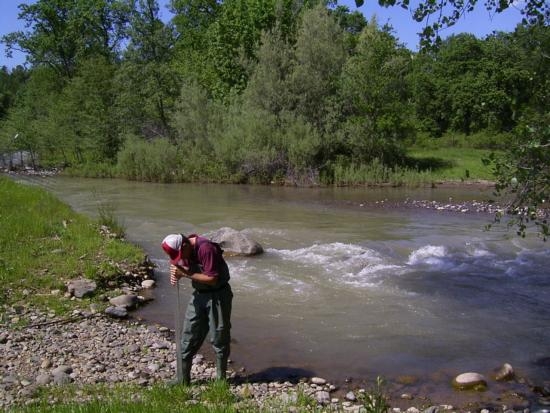
Larry Forero checks water transparency of Cow Creek. Photo by Lisa Thompson.
Bugs Rule at the California State Fair
If you head over to the California State Fair, which opened July 14 and continues through July 31, be sure to check out the Insect Pavilion at "The...

Monarch butterfly cutout in front of the Insect Pavilion at the Caifornia State Fair. (Photo by Kathy Keatley Garvey)

Colorful monarch butterflies are in sharp contrast to the painted cutout (above). (Photo by Kathy Keatley Garvey)
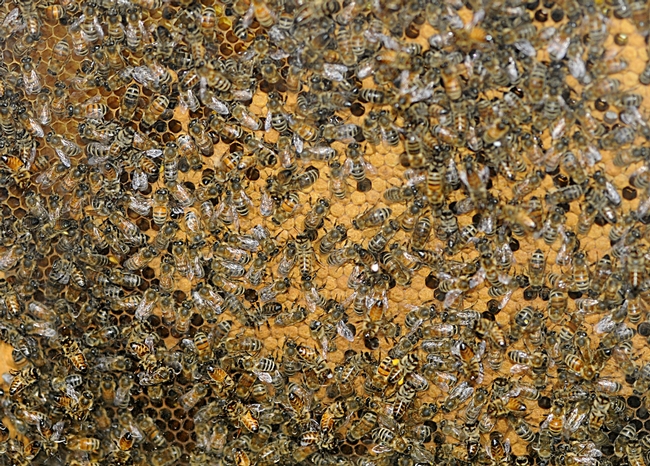
Close-up of bee observation hive in the Insect Pavilion. (Photo by Kathy Keatley Garvey)
California Agriculture launches E-Edition, allowing faster publication
California Agriculture journal launched its first E-Edition in the July-September 2011 issue, providing an expanded venue for the rapid publication of time-sensitive research. Find the E-Edition articles in the table of contents.
“Initially, E-Edition is being offered to authors who have been waiting for publication due to a backlog brought on by the statewide budget crisis,” says Janet White, California Agriculture’s executive editor.
California Agriculture is the University of California’s journal of peer-reviewed research and news in agriculture, natural resources and human resources. It has been continuously published for 65 years.
E-Edition articles are laid out just like print articles, with tables, figures and photographs. Readers can download and print copies in HTML or PDF format. Authors will be able to print articles on demand for distribution to target audiences.
“Readers of the print journal can preview abstracts and introductory comments of E-Edition articles in the pages of the journal,” White says. “Space permitting, E-Edition articles may be printed in future issues.”
E-Edition also means that, with the July-September 2011 issue, California Agriculture will switch from print to electronic “version of record,” the online version becoming the authoritative version to be indexed by databases and repositories. Like all published articles, E-Edition articles will benefit from California Agriculture’s augmented electronic presence.
The journal is posted in full on the California Digital Library and in the ANR Repository, and it ranks high in Google and Google Scholar searches. It appears in numerous indexes and databases including Thomson ISI (Agriculture, Biology and environmental Sciences, and the SCIE databases), EBSCO, Gale, Elsevier, AGRICOLA, Proquest, Commonwealth Agricultural Bureau (CAB) and open-access journal databases.
Be wary of restaurant calorie counts
A new study of food items from national chain restaurants found that calorie counts on menus and websites were accurate on average, but 19 percent of individual samples differed from laboratory measurements by more than 100 calories, according to a news release.
The study, led by Tufts University researchers, was published by the Journal of the American Medical Association yesterday and was reported on widely by the news media. Los Angeles Times reporter Daniela Hernandez sought comment from UC Cooperative Extension nutrition, family and consumer sciences advisor Susan Algert.
"This may be a word of caution that people are always better off eating at home," Algert was quoted.
Among the Tufts study's conclusions:
- On average, food items measured ten calories higher than the restaurants’ stated calories.
- Items often viewed as healthier from both sit-down and fast food restaurants, such as salads and soups, tended to have more unreliable calorie listings.
- Stated calories for fast food tended to be closer to laboratory measurements than the stated calories for food from sit-down restaurants.
- Food purchased in restaurants accounts for one-third of the average American’s daily food intake.
The Tufts news release said restaurants could help ease the obesity crisis by offering more calorie listings, making sure low-calorie foods do not contain more calories than stated, and providing a wider selection of lower calorie items.

Fast food calorie listings are generally more accurate than those of sit-down restaurants.


